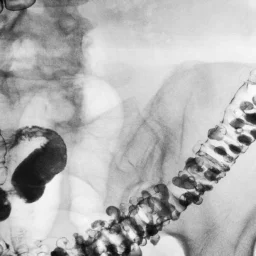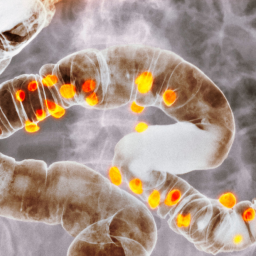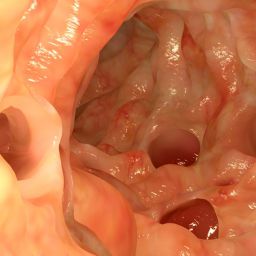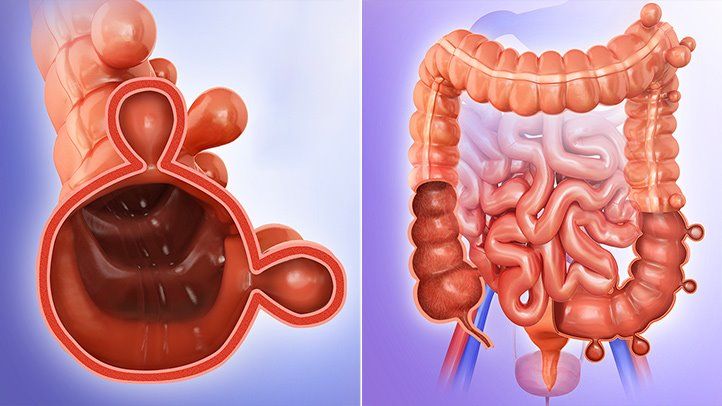
How Does Diverticular Disease Manifest in Children?
Diverticular disease in children presents with similar symptoms to those observed in adults, although the intensity and duration of symptoms may differ. Common symptoms include:
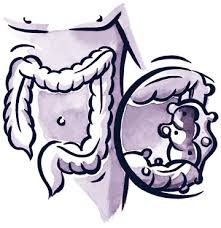
- Abdominal pain: This is typically located in the lower abdomen and may be intermittent or constant. The pain is usually described as cramp-like or sharp.
- Bloating and discomfort: Children may experience bloating or a sensation of fullness, particularly after meals.
- Changes in bowel movements: This can include diarrhea, constipation, or alternating between the two. In some cases, children may experience difficulty passing stool.
- Nausea and vomiting: In more severe cases, diverticular disease may cause nausea or vomiting, which is often a sign of diverticulitis (infection or inflammation of the diverticula).
- Fever: If diverticulitis occurs, children may experience fever due to the inflammation or infection of the diverticula.
Since diverticular disease in children is rare, these symptoms are often mistakenly attributed to more common pediatric gastrointestinal issues such as constipation or viral infections. As such, it is essential for healthcare providers to consider the possibility of diverticular disease in children presenting with unexplained gastrointestinal symptoms, especially if they have a history of constipation or inflammatory bowel disease.
Diagnosis of Diverticular Disease in Children
Diagnosing diverticular disease in children can be challenging because the symptoms often mimic other, more common gastrointestinal conditions. A thorough evaluation by a healthcare provider is essential, and may include the following diagnostic tests:
- Physical Examination: A doctor will assess the child’s medical history, abdominal tenderness, and general health status. A careful physical exam may help identify areas of the abdomen that are tender or swollen, which may point to diverticular disease.
- Imaging Tests:
- Abdominal X-ray: This may be used to detect signs of an obstruction or inflammation in the colon.
- CT Scan: A computed tomography (CT) scan of the abdomen can help detect diverticulitis and any complications, such as abscess formation or perforation of the colon.
- Ultrasound: This is sometimes used to detect changes in the abdominal area, though it is less commonly used than CT scans in diagnosing diverticular disease.
- Colonoscopy: Although not commonly performed in children, colonoscopy can be used to visualize the colon directly and identify diverticula or signs of inflammation. However, this is usually reserved for cases where other diagnostic methods are inconclusive or when there is suspicion of other gastrointestinal diseases.
- Blood Tests: Blood tests may be performed to check for signs of infection or inflammation, such as elevated white blood cell count (a sign of infection).
Treatment Options for Diverticular Disease in Children
Treatment for diverticular disease in children focuses on managing symptoms, preventing complications, and improving the overall health of the digestive system. Depending on the severity of the condition, treatment may involve the following:
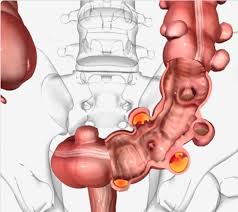
- Antibiotics: If diverticulitis (infection of the diverticula) is diagnosed, antibiotics are often prescribed to treat the infection. This may involve oral antibiotics, or in severe cases, intravenous (IV) antibiotics may be necessary.
- Pain Management: Mild to moderate pain may be managed with over-the-counter pain relievers, such as acetaminophen. Nonsteroidal anti-inflammatory drugs (NSAIDs) are generally avoided because they can irritate the stomach lining.
- Dietary Modifications: Initially, children with diverticulitis may be placed on a liquid diet to allow the colon to heal. As symptoms subside, a gradual return to a low-fiber or soft-food diet may be recommended. Once the condition is stable, increasing fiber intake is essential for maintaining healthy bowel function and reducing the risk of future flare-ups.
- Surgery: Surgery is rarely needed in children with diverticular disease. However, in severe cases, where there is significant inflammation, abscesses, or perforation of the colon, surgical intervention may be required to remove the affected portion of the colon.
- Management of Underlying Conditions: If the child has other gastrointestinal conditions such as inflammatory bowel disease (IBD), managing these conditions will be important to prevent complications and flare-ups of diverticular disease.
Preventive Measures for Diverticular Disease in Children
Preventing diverticular disease in children involves addressing lifestyle factors that contribute to its development. Parents can play a key role in reducing their child’s risk by encouraging healthy habits and managing any underlying conditions.
- High-Fiber Diet: Ensuring that children consume a diet rich in fruits, vegetables, whole grains, and legumes is essential for preventing constipation and promoting healthy digestion. Fiber helps to prevent straining during bowel movements, which can reduce the risk of diverticula formation.
- Adequate Hydration: Encourage children to drink plenty of water throughout the day to help maintain soft stools and prevent constipation.
- Regular Physical Activity: Physical activity stimulates bowel movements and helps prevent constipation. Encouraging children to be active through sports, walking, or playtime can contribute to overall digestive health.
- Monitoring and Managing Chronic Conditions: If a child has a history of chronic constipation or inflammatory bowel diseases like Crohn’s disease, it is important to work closely with healthcare providers to manage these conditions effectively and reduce the risk of developing diverticular disease.
- Education on Healthy Habits: Teaching children the importance of regular bathroom habits, not holding in stool, and avoiding excessive straining can reduce the risk of diverticular disease.
Diverticular disease in children is rare but can occur, often in association with underlying gastrointestinal conditions such as chronic constipation or inflammatory bowel disease. The symptoms of diverticular disease in children can be similar to those of other, more common gastrointestinal issues, which can make diagnosis challenging. However, with proper medical evaluation, including imaging and blood tests, healthcare providers can effectively diagnose and treat diverticular disease in pediatric patients.
Preventing diverticular disease in children involves a combination of maintaining a high-fiber diet, encouraging hydration and regular physical activity, and managing any existing gastrointestinal conditions. While diverticular disease is rare in children, being proactive about digestive health can reduce the risk and ensure better overall health for the child.

